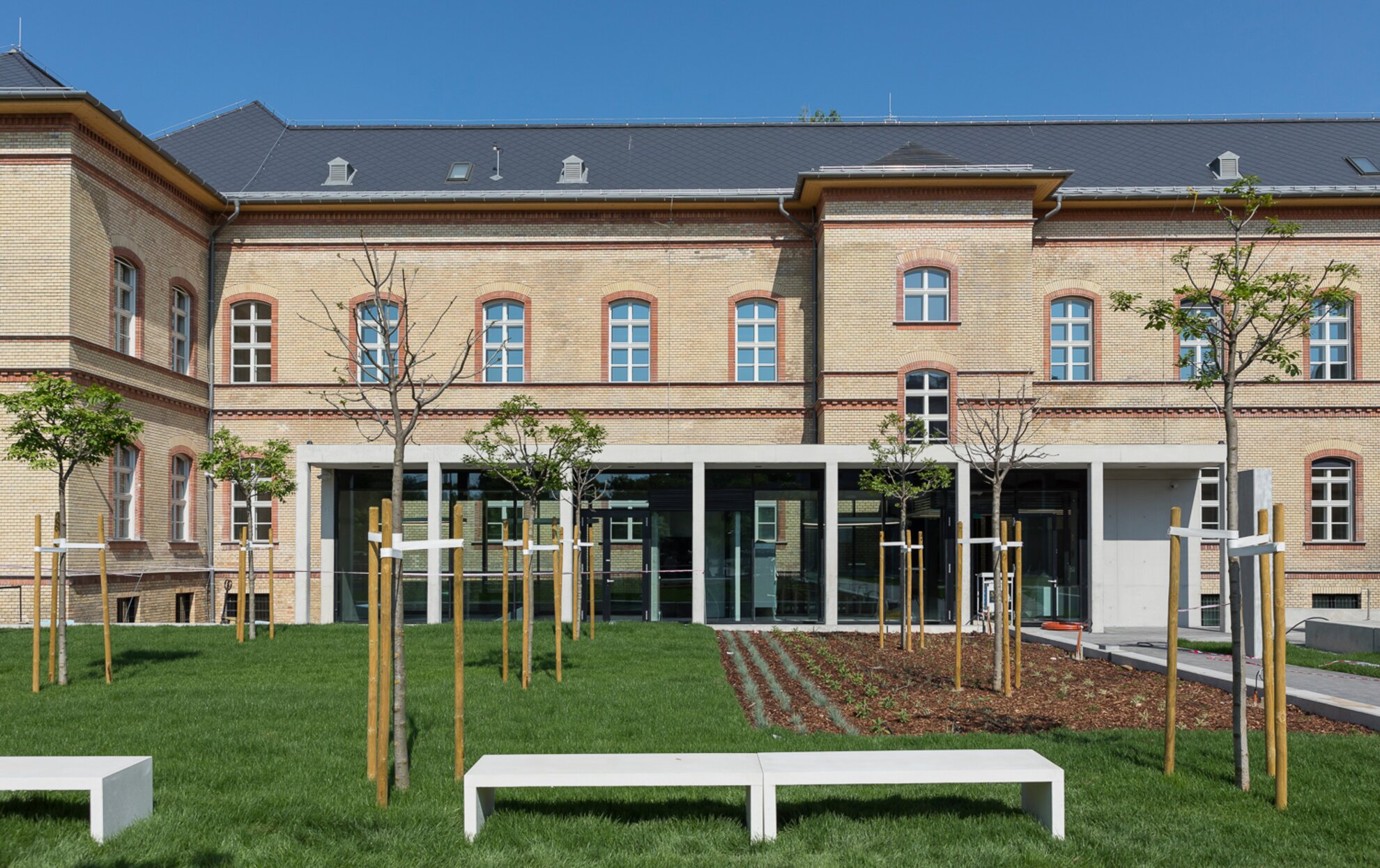The National Museum Restoration and Storage Centre is an exciting combination of museum infrastructure, monument protection and architecture.

The complex will serve the Ethnographic Museum, the Museum of Fine Arts and the Hungarian National Gallery, whose collections are currently stored in seven warehouses and depots, not always in the best conditions.

In addition to the individual warehouses especially designed for works of art, there will be restorer workshops, labs and research rooms, where some 250 experts will work. The Central European Art History Research Institute (KEMKI) is also moving into the complex.

Designers studied similar examples of newly built or major museums currently under construction around Europe, such as the British Museum, the Hermitage and the Louvre. A wing of 30,000 square metres has been created, where the archives are protected from direct sunlight, noise and vibration.

Until 2007, the site on Szabolcs utca adjacent to the park was occupied by a working hospital. Several of its buildings were erected at the last turn of the century according to plans by renowned architects Vilmos Freund, Zsigmond Quittner and Alfréd Hajós.

Historically valuable elements have been preserved and the façades have been restored in the spirit of the original plans. Interiors are somewhat less specific. A former Jewish prayer house, which functioned as a boiler room under Socialism, will host the visitor centre, exhibition space and conference centre.

The building will also feature innovative solutions, its energy supply and heating powered by geothermal heat and solar cells.




